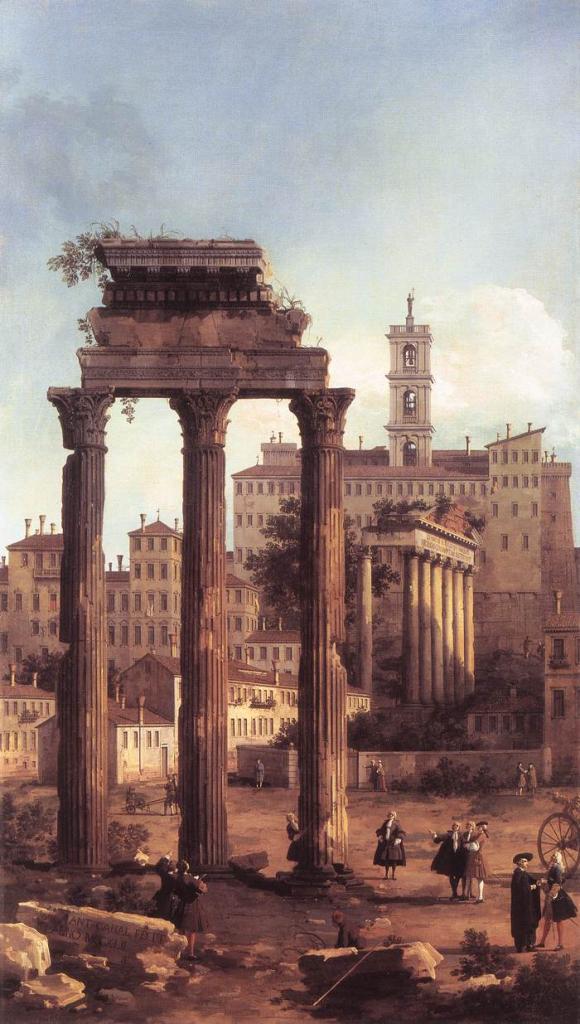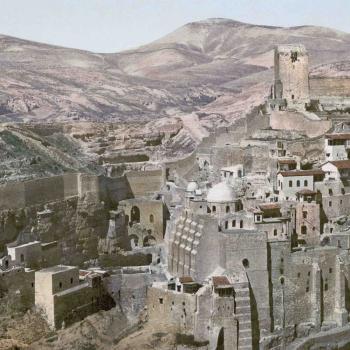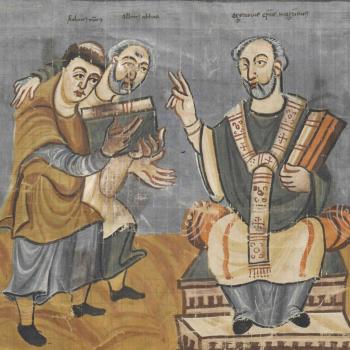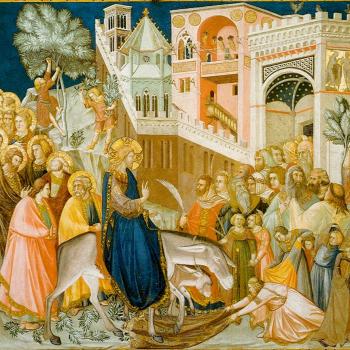Empires shape religions, whether by spreading faiths, or particular forms of belief and practice. Much of that critical work occurs in the great cities that empires usually (not always) develop.
Empires generally need capitals, seats of royal authority, and hubs of military and bureaucratic power. Those cities quite rapidly become very populous, and economically critical. We think of Babylon and Baghdad, London and Paris. Often too, empires develop very sizable and powerful cities that are great regional capitals. In each case, all such cities attract diverse migration, so that cultures and ways of thought interact in ways they could not have done if individual societies had remained isolated from each other. Those interactions are crucial to religious development.
In the Western tradition, Rome is of course the best known example of this. Rome early became a very influential center of the emerging church, and a magnet for Christian thinkers from around the enormous empire. In the 130sAD, an interested Roman believer could hear the teachings of such prestigious figures as the Egyptian Valentinus, or Marcion, from what we would today call northern Turkey. You did not have to wander to seek out the wider Christian world: it came to you. To adapt the cliché, all spiritual roads led here. And when you encountered new insights and ideas in the metropolis, you took them home with you to your home territory, which might be a thousand miles distant.
I say the following semi-seriously. If you map how plagues and pandemics spread around the world in any era, those are exactly the routes that are followed by new religious ideas or fashions, and indeed whole new religions. All roads lead to (and from) Rome, and so do plenty of microbes. I am NOT comparing religions to plagues (!), but just pointing out that people”caught” thees things in the same places, usually in great cities and entrepôts, and you can map how they spread along trade routes and routes of military conquest. Do be sure to include seaports and major military bases on your pandemic maps.
I have spoken of Rome, but much the same was true of other dominant cities, including the Persian capital of Seleucia-Ctesiphon, which stood near the ancient site of Babylon, and the later site of Baghdad. In its day, Seleucia-Ctesiphon was one of the world’s largest cities, and like Rome, it was also a key Christian center, in this case for the Church of the East. Persia’s imperial roads led far into the heart of Central Asia, where they connected with the Silk Route, which for centuries was the world’s greatest axis of missionary endeavor.
Within the Roman Empire itself, there were two great secondary capitals, namely Antioch and Alexandria, each of which had vaunting pretensions for its own status and influence. Culturally and symbolically, we can imagine a Hellenistic Triangle, formed by imaginary lines joining the three imperial cities of (Syrian) Antioch, (Egyptian) Alexandria, and (Babylonian) Seleucia-Ctesiphon. Each, in its time, was one of the centers of the ancient world. Together, they exercised an overwhelming influence on non-Greek peoples, including Jews and early Christians. Many of the debates that shaped early Christianity – notably the Christological wars from the fourth century onward – can be seen as struggles between Antioch and Alexandria. That triangle retained its pivotal role for a full millennium, until after the rise of Islam. It was by no means superseded by the creation of Constantinople in the fourth century AD.
Alexandria, Antioch, and Seleucia all took their names from their Greek imperial founders. Just a suggestion in passing, for some polymath scholar with wide linguistic skills, and broad historical learning: how about writing a book on all the many Seleucias or Alexandrias that were established in the centuries after Alexander, and what became of them? Pick either one, the Seleucias or the Alexandrias, or indeed the Antiochs. What a wonderful project…
When political empires failed, the great cities might suffer sack or ruin, but commonly, the religious heart continued to beat. When the Roman emperors left Rome for Constantinople, the Roman Popes became ever more powerful, appropriating various imperial titles and privileges. The break in the Persian East was nothing like as clear, but the patriarchs of the Church of the East operated chiefly from Seleucia/Ctesiphon until in the late eighth century they decamped to the new Islamic capital of Baghdad. And throughout the story, they always referred to themselves as patriarchs of Babylon. European travelers to south Indi in the sixteenth century were baffled and appalled to find large Christian communities that knew nothing of a Pope in Rome, but followed “the Patriarch of Babylon, the universal pastor and head of the Catholic Church.”
The Manichean church also maintained its Patriarchate of Babylon at Seleucia/Ctesiphon, probably into the eighth century.
In the West, the Roman Popes famously kept alive such ancient imperial titles as Pontifex Maximus. The Church of the East preserved its own imperial recollections. Through the end of the Middle Ages, many scholars in the Arab, Middle Eastern, and Central Asian worlds continued to date by “the Year of the Greeks,” which was the calendrical practice of the Syriac Christian churches. They did not use the Christian Anno Domini, nor the Muslim dating by years of the Hegira. This “Greek” numbering system instead used the Seleucid era, which marked time from the conquest of Babylon in 312 BC by the Greek general Seleucus I. Although that specific act of conquest is now largely forgotten (and who remembers the foes from whom he conquered it?), the long shadow it cast points to the lasting impact of older empires like the Seleucids well into the Middle Ages – and of course, it was the Church that did the remembering.
Consciously or not, churches channeled dead empires. And sometimes, dead cities, such as Babylon and imperial Rome.
Other cities retained their imperial traditions. Ethiopia was a powerful independent kingdom, which converted to Christianity in the fourth century. But for most of its history, the story of the Ethiopian church constitutes a battle between local control (the monastic leadership) and the abunas, the representatives of the Coptic Patriarchs (or Popes) in Alexandria. That imperial city too exercised its sway over a vast geographical area.
Modern imperial cities too exercise a comparable role, even in an age of mass media and instant communications. London was the capital of the British Empire, but it was also the place where dissidents and rebels went to plot the overthrow of that and other empires, and to exchange ideas and beliefs. The same was true in its way of Paris. Both metropolises were centers of religious activism, organization and innovation for Global South nations.
The effects were particularly clear in the case of Islam, which served as the greatest single obstacle to the modern European empires. Historically, Islam was an extremely diverse religion, and only in modern times, through the activity of the European empires, was it possible for leaders from very different parts of the world. London in particular offered the first venue in Islamic history where you could find representatives of each and every Muslim school, strand, and movement. They took those new insights home with them, and in the process created the Islam (and the Islamism) that we know in the modern world.
Imperial cities shape faith, and faiths.
From a huge literature, one book I like on this topic is Tristram Hunt, Cities of Empire: The British Colonies and the Creation of the Urban World (New York: Metropolitan Books, 2014).
On the Seleucids, see Paul J. Kosmin, Time and Its Adversaries in the Seleucid Empire (Belknap Press/Harvard University Press, 2019); and on the turmoil from which that empire emerged, see Pat Wheatley and Charlotte Dunn, Demetrius the Besieger (Oxford University Press, 2020).


















